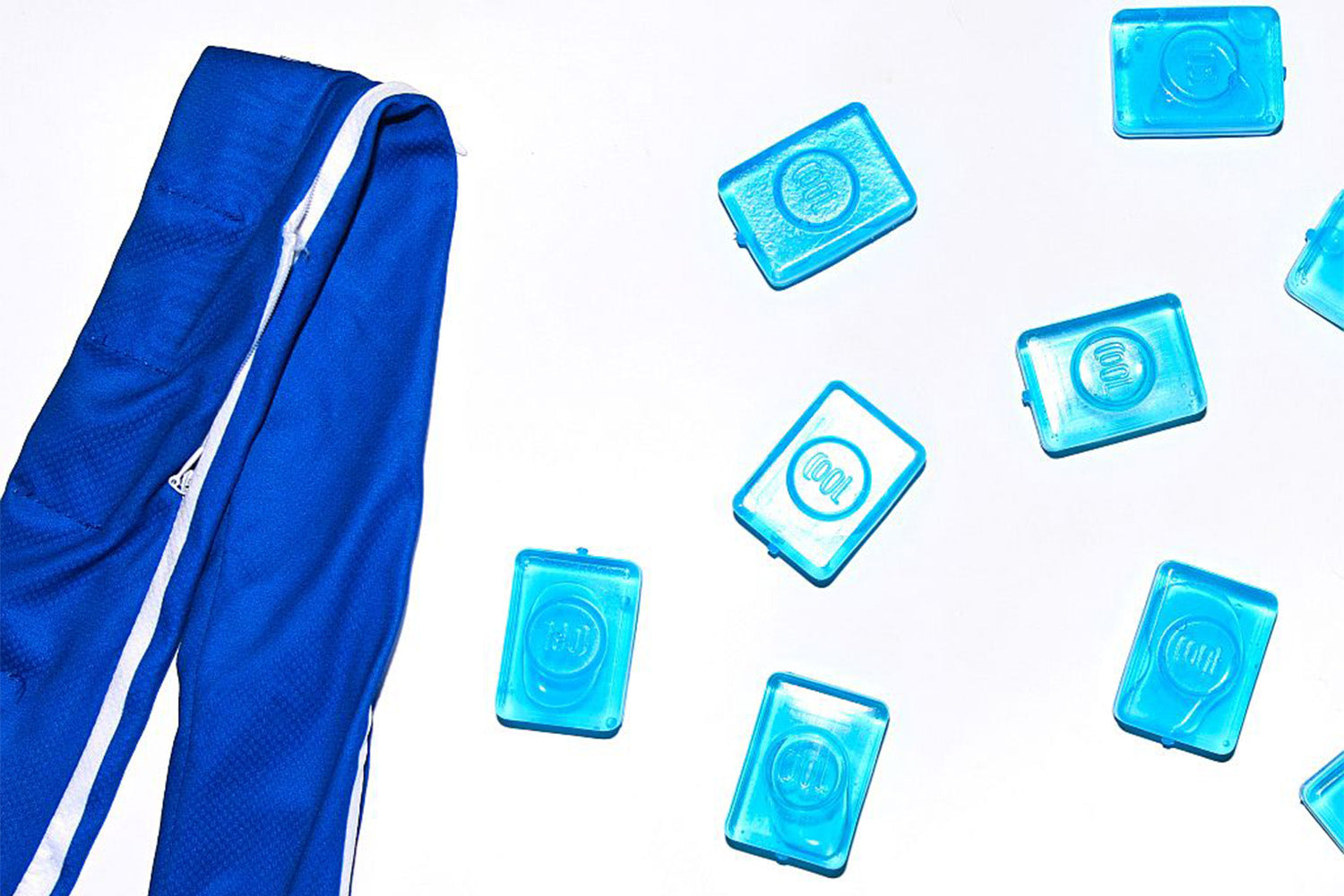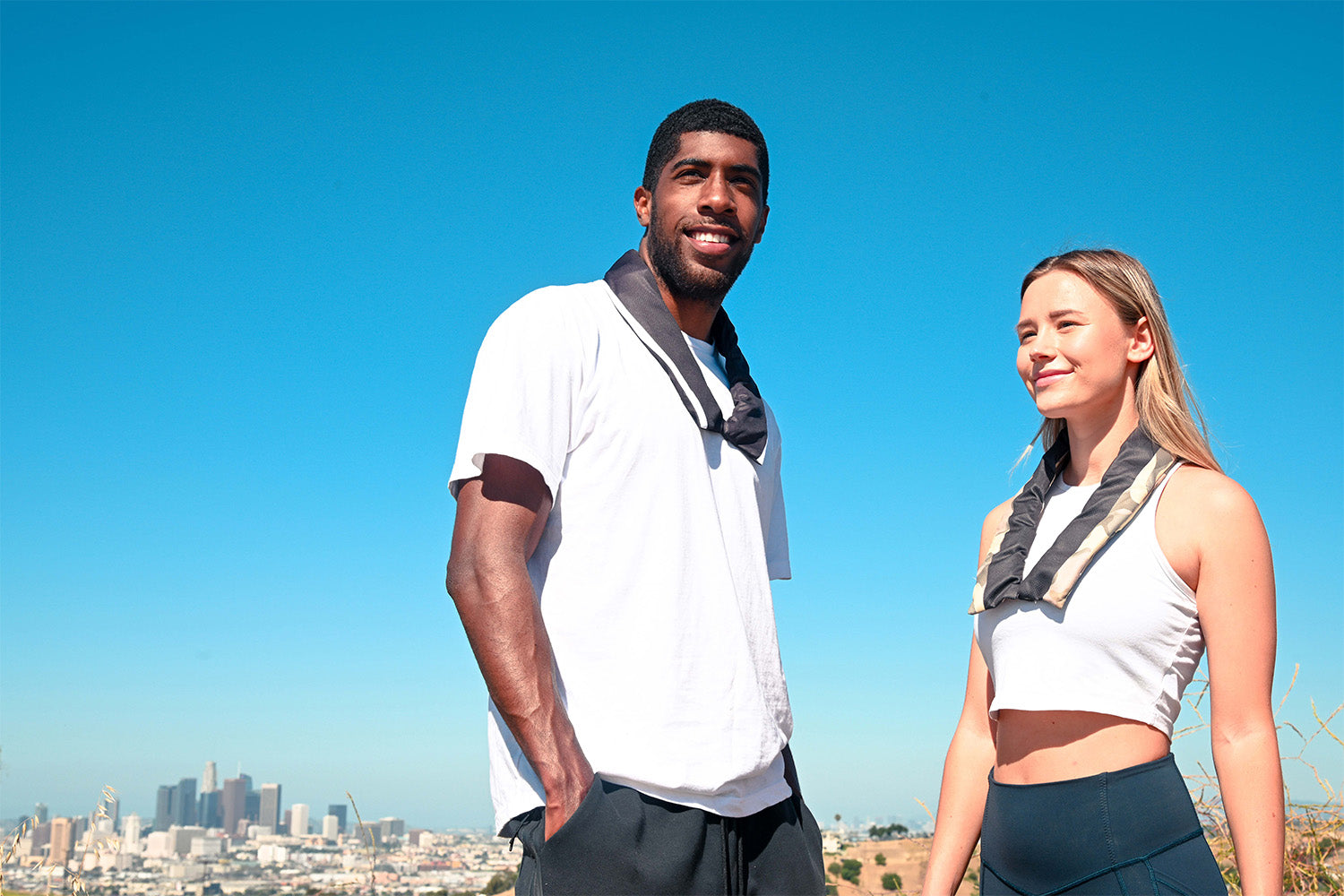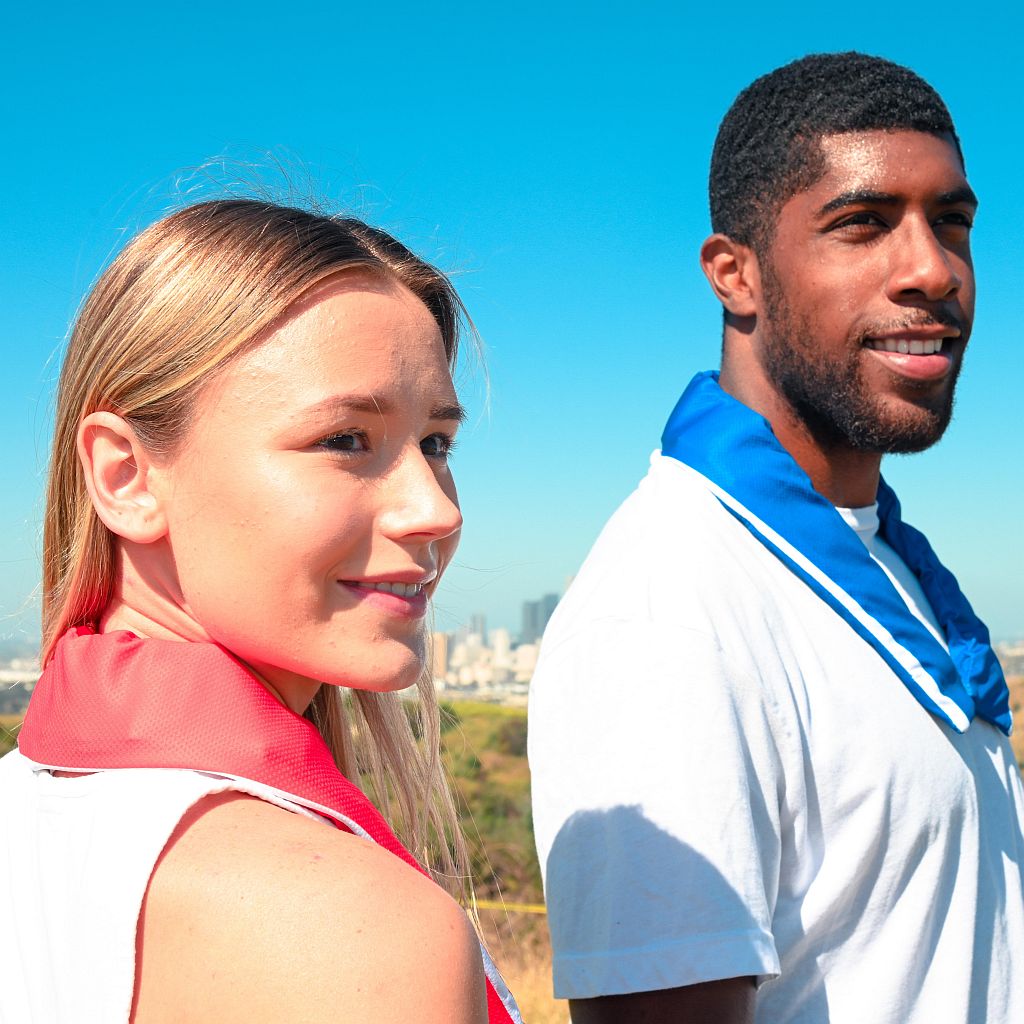We all know how important it is to stay hydrated while hiking, but did you know that it's just as important to keep your neck cool?
In this post, we'll share a few helpful tips for avoiding an uncomfortable, sweaty neck while you're hiking on your favorite trails.
Dump Some Cool Water on Your Neck
This is probably the simplest way to keep your neck cool while hiking. Whenever you feel like your neck is getting too warm, just stop for a few minutes and dump some water from your canteen over your head and neck.
The evaporating water will help cool you down and prevent sweat from building up. Just be sure to refill your canteen when you're done!
Bring a Wearable Cooling Towel
If you don't want to stop and cool down with water every few minutes, another option is to bring along a cooling towel. However, not all of the options you'll find online deliver the same results.
Cool Links® beats the competition by keeping you comfortable for longer and fitting perfectly around your neck. These innovative two-in-one cooling towels offer several hours of cooling relief at a time thanks to our reusable frozen cubes. These cubes penetrate deeply into your muscle tissue for fast and long-lasting cooling relief.
However, if you're out on the trail for hours (or days) and your cubes thaw out, Cool Links® can still help you chill with just a splash of water — just like a traditional cooling towel would.
Using Cool Links® to refresh yourself on a hike is as easy as can be. Just wet the towel and snap it to activate! After that, you're free to hike without your neck overheating.
Hike in the Shade
If possible, try to stick to hiking in the shade as much as possible. This will help keep your whole body cooler, not just your neck.
Of course, this isn't always possible depending on the time of day and the layout of the trail. Nevertheless, if you can, seek out shady areas to stay cool.
Hike to a Swimming Hole
This tip is especially helpful if you're hiking in the summer. If there's a swimming hole or lake along your hike, take a quick dip to cool off!
Not only will this help cool down your neck, but it will also give you a chance to rest and rehydrate. Just be sure to put sunscreen on before you get out of the water.
Train for Your Hikes
If you're new to hiking, it's important to train your body for the activity. This means gradually increasing the difficulty and length of your hikes over time.
By doing this, you'll avoid putting too much strain on your body, which can lead to overheating. It will also help your body get used to being active in hot weather, making it more efficient at regulating its temperature.
Wear the Right Clothing
Finally, be sure to wear clothing that will help keep you cool while hiking. Avoid wearing cotton, which doesn't breathe well and will hold sweat against your skin.
Instead, opt for moisture-wicking fabrics that will help wick away sweat and keep you cool. You might also want to consider wearing a hat or visor to keep the sun off your head and neck.
Need-To-Know Facts About Hiking
Now that you know how to keep cool on hikes, let's talk about some of the ins and outs of hiking, its health benefits, and more.
What Are the Health Benefits of Hiking?
Hiking is a low-impact activity that can improve your overall health and well-being. Walking in nature has been shown to reduce stress, anxiety, and depression. It can also help you sleep better at night. And, of course, hiking is a great way to get some exercise.
Even if you don't consider yourself an outdoorsy person, we hope you'll give hiking a try.
When Is the Best Time to Hike?
The best time to hike depends on a few factors, including the weather and your own personal schedule. If you live in an area with hot summers, you might want to hike in the spring or fall when the temperatures are cooler.
Likewise, if you have a busy work schedule, you might want to hike on weekends or during your vacation days. Of course, the best time to hike is whenever you can fit it into your schedule!
What Should You Bring on a Hike?
In addition to the essentials — water and food — there are a few other things you should bring on a hike, including:
- Sunscreen
- A hat or sunglasses
- Bug spray
- First-aid supplies
- A map
- Your Cool Links® cooling towel
Of course, you should also dress appropriately for the weather. If it's cold out, be sure to wear layers of warm clothing. If it's hot, dress in light, breathable clothing.
Does Hiking Burn a Lot of Calories?
The number of calories you burn while hiking depends on a few factors, including your weight, the terrain, and how fast you're walking. A general rule of thumb is that you'll burn about 100 calories per mile. So, if you hike for 30 minutes (about two miles), you can expect to burn around 200 calories.
Of course, the more challenging the terrain, the more calories you'll burn. If you're hiking uphill, you can expect to burn even more calories than that.
What Are Some of the Best Hiking Trails in the US?
Now that we've talked about the benefits of hiking and how to keep your neck cool on the trail, let's get you set up with some hiking recommendations.
Below are our picks for some of the best hiking trails in the United States.
1. The Appalachian Trail
The Appalachian Trail is one of the most popular hiking trails in the US, and for good reason. It runs for 2,193 miles from Georgia to Maine, and it's perfect for both beginners and experienced hikers.
2. The Pacific Crest Trail
The Pacific Crest Trail is another long-distance trail that runs for 2,653 miles from California to Washington. It's known for its stunning views of the Pacific Ocean, as well as its diverse terrain.
3. The John Muir Trail
The John Muir Trail is a shorter trail that runs for 210 miles from Yosemite Valley to Mount Whitney in California. It's named after naturalist John Muir, and it's known for its beautiful scenery.
4. The Bright Angel Trail
The Bright Angel Trail is a popular trail in Grand Canyon National Park. It's a strenuous trail that runs for 9.5 miles from the South Rim to the North Rim, but it's worth it for the incredible views.
5. The Kalalau Trail
The Kalalau Trail is an 11-mile trail that runs along the Napali Coast in Kauai, Hawaii. It's known for its stunning views of the ocean, as well as its difficult hiking conditions.
6. The Camelback Mountain Echo Canyon Recreation Area
The Camelback Mountain Echo Canyon Recreation Area is a popular hiking spot in Phoenix, Arizona. It's known for its challenging trails and beautiful views of the city.
7. The Flattop Mountain Trail
The Flattop Mountain Trail is a popular trail in Rocky Mountain National Park. It's a relatively easy trail that runs for 3.5 miles, and it offers stunning views of the surrounding mountains.
8. The Half Dome
The Half Dome is a famous rock formation in Yosemite National Park. It's a popular spot for hikers, and the trail to the top is strenuous but rewarding.
9. The Cucamonga Peak
Cucamonga Peak is a popular hiking spot in Southern California. It's a difficult trail that runs for nine miles, but it offers stunning views of the surrounding area.
10. The Crater Lake National Park
The Crater Lake National Park is a popular hiking spot in Oregon. It's known for its beautiful scenery and its challenging trails.
Get Ready To Hit the Trail
Now that you know about some of the best hiking trails in the US, it's time to get out there and explore! Just remember to stay safe, hydrated, and cool while you hike — with a little help from Cool Links® Cooling Towels!
Sources:





